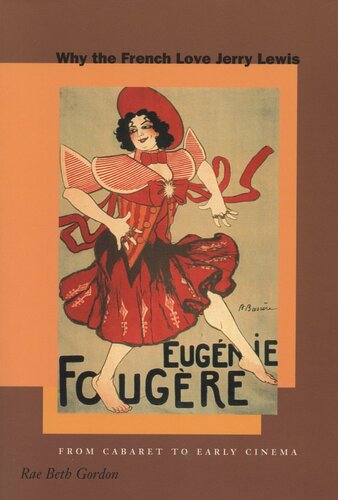

Most ebook files are in PDF format, so you can easily read them using various software such as Foxit Reader or directly on the Google Chrome browser.
Some ebook files are released by publishers in other formats such as .awz, .mobi, .epub, .fb2, etc. You may need to install specific software to read these formats on mobile/PC, such as Calibre.
Please read the tutorial at this link: https://ebookbell.com/faq
We offer FREE conversion to the popular formats you request; however, this may take some time. Therefore, right after payment, please email us, and we will try to provide the service as quickly as possible.
For some exceptional file formats or broken links (if any), please refrain from opening any disputes. Instead, email us first, and we will try to assist within a maximum of 6 hours.
EbookBell Team

5.0
18 reviewsVividly bringing to light the tradition of physical comedy in the French cabaret, café-concert, and early French film comedy, this book answers the perplexing question, “Why do the French love Jerry Lewis?” The extraordinary emphasis on nervous pathology in the Parisian café-concert, where the genres of the Epileptic Singer and the Idiot Comic took center stage, and where popular comic monologues and songs included “Man with a Tic” and “I’m Neurasthenic,” points to a fascinating intersection between medicine and popular culture. The French tradition of comic performance style between 1870 and 1910 nearly exactly duplicates the movements, gestures, tics, grimaces, and speech anomalies found in nineteenth-century hysteria; the characteristics of hysteria became a new aesthetics. Early French film comedy carried on this tradition of frenetic gesture and gait, as most film performers came from these entertainments and from the circus. Even before Chaplin’s films triumphed in France, film comics were instantly recognizable from their pathological gait, just as Jacques Tati would be a half-century later. Comedy, a genre that dominated French cinema until World War I, has often been linked to a mass public for film; the author elucidates this link by proposing a broadly generalized cultural-medical phenomenon as the explanation for the dominance of the comic genre. Comic performance style drew from a group of nervous disorders characterized by the psychological automatism emanating from the “lower faculties”: nervous reflex, motor impulses, sensation, and instinct. Building on her previous work on hysteria, the cabaret, and pathologies of movement in the films of Georges Méliès, and drawing on over 400 French films made between 1896 and 1915, the author contributes to a new theory of spectatorship at work in the cabaret, in shows of magnetizers, and in early French film comedy. Jerry Lewis touches a nerve in French cultural memory because, more than any other film comic, he incarnates this tradition of performance style.